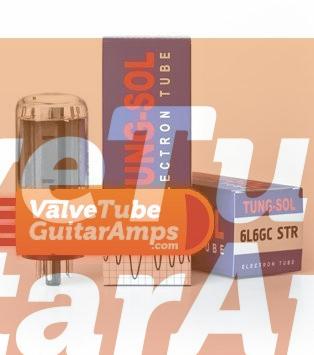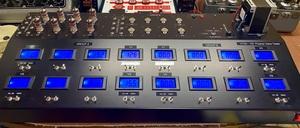Valves Tubes Be Careful What you buy !
There are many vendors of valves and tubes and I thought it might be useful to make a list of my observations in the market. Of course I cannot be totally un-biased as I sell valves/tubes on this site and we sell limited selection of what we offer on Ebay too.
Now I am not criticising at any sellers but some clearly are less technically capable than others and don’t have the test gear to truly test their stock and find good matched output valves and matched pre-amp valves.
Here are some things that I have spotted
Receiving Dead or Poorly Operating Valves
There are a very few valves that arrive from the manufacturer and they are DOA ( dead on arrival). This is not because of bad manufacturing and testing. Keep in mind that valve technology is very old. Valves such as the 6L6 were introduced in 1937. Not many electronic components have been in production 78 years! As it is a mechanical item, and have to be subjected to high temperature to seal them in the glass envelope, a very few end up either faling just after test or within minutes of operating. This is why we inspet and test every valve we receive from a manufacturer. Yesterda, I was sitting testing EL84’s so that I could match them as pairs and quads. I leave them running under full voltage so that we match them when at true operating temperature. One unit’s heater failed in the middle of the test. I believe it is better for us to find the dead ones rather than the customer. So ook for a vendor that is really testing and matching the valves. If they are factory matched, then they are verified by the supplier through testing.
Valve Matching – Pre-amp Valves
Yesterday I spotted a vendor saying he was selling matched pre-amp valves. One of the criteria was he was matching the preamp valves to within 1mA, but as pre-mp valves only use a few mA for each of the triodes this is not matching at all !! If in doubt ask the supplier what matching actually means.
Matching Output Valves
Matching of output valves is another mine field. What does matching mean ? There is no official industry definition of matched valves. In the heyday of valve manufacturing there were no matched valves available as a standard product. You paid your money and got what was on the shelf at the time
I have never seen a data sheet from any manufacturer defining exactly what the manufacturer matching process actually is. If you are paying good money for matching, then it is only reasonable to ask what you are getting for your hard earned cash.
Here is our approach to providing you with a matched output valve set. Lets take the example of a pair of matched output valves. What you need is a pair of valves that under the same operating conditions ( anode voltage, screen voltage, bias voltage and heater voltage) , they draw as close as possible, the same current. If they don’t, then the output transformer has an impedance and the voltages on the two vales will be different. The output waverform will be ” lop sided” . In other words your nice playing of music ends up with the kind of distortion you don’t want as it sounds bad !
Once the current is matched as close as possible then the “gain” or to be more precise, the mutual conductance of the valve, denoted by the Greek Letter μ ( pronounced “mu”) which is measured in mA/volt., has to be as closely matched as is practical. An accurate way to do this is to sit and test valves by hand.
Matching the current and the gain is slow and labour intensive. We now provide customers with a test certificate showing the results of the matching. I have seen that some manufacturers match the anode current only and this does not mean the gain is balanced. to be this is a half matched set of valves. we match current AND gain.
Sometimes a customer will come back and say, ” but I tested each valve in my amp with a bias probe and the current on one valve is 4 mA different from the other? Why is this?” When valves are matched they are done in a tester and the test set up is exactly the same for each valve. In an amp in a typical push pull output set up the anode volts is supplied to the centre tap of the transformer and each valve is connected to ech end of the trnsformer. There is no guarantee the impedances are the same. Also the resistors setting up the grid bias ( or cathode resistors if present in a cathode bias set up) are unlikely to be the same value and as an amp ages the heat from the valves does tend to make the resistor values change. With carbon composition resistors in vintage amps the resistor drift is worse so it is very unlikely you can get exactly matched anode currents.
Where did my valves/ tubes come from?
Are the valves un-official imports or from a supplier dealing with the manufacturer? It is not well known but certain brand names and valve designs are only licensed to be sold in certian countries. A well known valve brand in the UK is ” Mullard”. The company originally manufactured valves in the UK but production ceased. Mullard valves are not officially imported into the UK. No-one can claim they are an official Mullard UK dealer. But new Mullard valves are available in the UK
Mullard valves can be sourced in China though various distributors exporting them. My concern is that the lines of supply are very long and there is the real opportunity for fakes to be introduced in the long road from Russia to China to the UK. Our policy is to deal only with the manufacturer directly and buy directly from the manufacturer.
Finally
I hope these thoughts were helpful and your feedback and thoughts are welcome at info@valvetubeguitaramps.com


